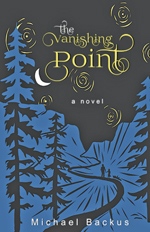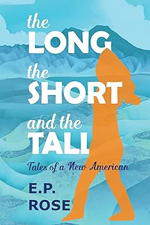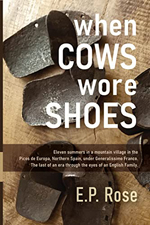Mark Fleisher is an Air Force veteran and former journalist with experience as a combat news reporter as well as a newspaper reporter and editor. Now a published poet, after the release of his first book of poetry in 2014, his work appears in numerous anthologies. Mark’s fifth book of full-length poems is Knowing When: Poems (Mercury HeartLink, March 2023) in which he “writes of sadness and tragedy, lightens the mood with poems about love, nature, even baseball, as well as a mirthful look at technology. Fleisher’s blend of narrative and lyric styles cut to the heart of the matter, showing the ability to speak volumes in a minimum number of lines.” Look for Mark on Facebook and his Amazon author page.
 When readers turn the last page in the book, what do you hope your poems accomplish?
When readers turn the last page in the book, what do you hope your poems accomplish?
I hope the poems in Knowing When encourage readers to think about what I’ve written and what, if anything, the words mean to them. Maybe shed a tear or elicit a chuckle.
Do you have a favorite poem in the book, one that has a deeper meaning than the others?
I don’t know if they are my favorites, but the three poems talking about gun-related events underscore for me the very real and serious problem we have in this country. If I had to pick a single poem it would be “A Bittersweet Christmas.” It involves a couple I knew in Michigan. The husband — now deceased — had dementia, and his wife thought a Christmas tree would provide him with a little joy.
How did Knowing When come together?
I would venture to say the title poem and the last poem in the book were written specifically for Knowing When. The others I had written over the course of several months. I like to mix humorous — at least to me — poems in with the more serious stuff. Because I had most of the poems already written and sitting in the computer, it didn’t take all that long to assemble. The editing cycle was essentially going through the book numerous times and then Pamela Warren Williams (my publisher at Mercury HeartLink in Silver City) found things I missed. She did the interior design and we kind of collaborated on the cover. I had an idea of a clock with no hands. She suggested one hand and I agreed. The cover is essentially in gray tones and black. One reviewer called it depressing, another said it was extremely effective. You never know.
When did you know you had taken the manuscript as far as it could go, that it was finished and ready for publishing?
Great question. I had the manuscript finished — at least I thought so — and sent it off to Pamela. A few days later, I was driving down 4th Street on my way to the gym. A song written by John Prine and sung by Nanci Griffith came over my audio system. The song was “You Broke the Speed of Sound of Loneliness.” It dawned on me that there must be another side of loneliness and I started composing the poem in my head. I went to the gym, drove home and remembered what I had conjured up in my mind. I called Pamela and she said there was time to add another poem.
How is Knowing When different from, or similar to, your four other full-length books of poetry?
While I wouldn’t call myself a “war poet,” my year in Vietnam as an Air Force combat news reporter certainly informs. My previous four books contained a fair number of Vietnam-related poems and a few about other wars. Oddly, Knowing When does not. That was not a conscious decision on my part. In fact, I wasn’t even aware of it until the manuscript was done.
What was the best part of putting this project together?
Finishing it. Seriously, working with Pamela. She’s published my last three books and her late husband Stewart Warren did the first three. Knowing in my mind and my heart that I did my best and believing I had a pretty good book. I guess that was borne out as Knowing When was a finalist for the New Mexico-Arizona Poetry Book Award and a bronze medalist from the Military Writers Association of America. An author whose name I don’t recall said for a man, holding that finished book in his hands is the male equivalent of giving birth.
When did poetry become important to you?
I’m a relative newcomer to poetry. Didn’t like poetry very much or understood much of it through high school and college. When I started visiting New Mexico in 2010-2011, I started writing poetry. I have no clear idea why that happened, maybe because of the poetry community in and around Albuquerque. My reason for coming to New Mexico was an affair of the heart. I reconnected with a wonderful woman who I had briefly known — we had two dates — before I went to Vietnam. We hadn’t seen each other in 43 years. I remember writing romantic poems as our relationship grew. Most of them pretty bad as I really had no idea what I was doing.
How important is accessibility of meaning? Should a reader have to work to understand a poem?
Accessibility of meaning…I’ve been told my poetry is accessible and approachable. I am best categorized as a narrative poet, telling a story. That’s an outgrowth of my newspaper/magazine background. When I started writing poetry, I had a hard time with lyrical poetry. I’m more comfortable with it now. Still there are some things I’ve written and then said “where did that come from?” Someone — I can’t recall who — said some poems come from way out there and you are merely a conduit in sending it to readers.
 How does a poem begin for you, with an idea, an emotion, an image?
How does a poem begin for you, with an idea, an emotion, an image?
Yes, yes and yes. I’ve even written a few poems generated by dreams, like having lunch with a young Einstein.
What writing projects are you working on now?
By the time this interview posts, I’ll have my next book in my hands. It’s called Persons of Interest and it’s different from the other books. This book contains 13 stories and 13 poems, a Baker’s Dozen of each.
 KL Wagoner loves creating worlds of fantasy and science fiction. Her current work in progress is The Last Bonekeeper fantasy trilogy and short stories in the same universe. A member of SouthWest Writers since 2006, Kat has worked as the organization’s secretary, newsletter editor, website manager, and author interview coordinator. Kat is also a veteran, a martial art student, and a grandmother. Visit her at klwagoner.com.
KL Wagoner loves creating worlds of fantasy and science fiction. Her current work in progress is The Last Bonekeeper fantasy trilogy and short stories in the same universe. A member of SouthWest Writers since 2006, Kat has worked as the organization’s secretary, newsletter editor, website manager, and author interview coordinator. Kat is also a veteran, a martial art student, and a grandmother. Visit her at klwagoner.com.











 Five members of SouthWest Writers have been recognized at the Raymond G. Murphy VA Medical Center in Albuquerque, New Mexico for their entries into the 2024 VA Creative Writing Contest.
Five members of SouthWest Writers have been recognized at the Raymond G. Murphy VA Medical Center in Albuquerque, New Mexico for their entries into the 2024 VA Creative Writing Contest.



























